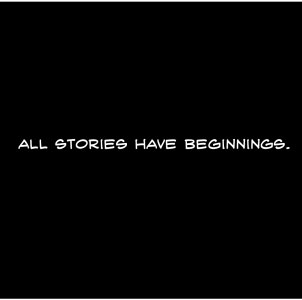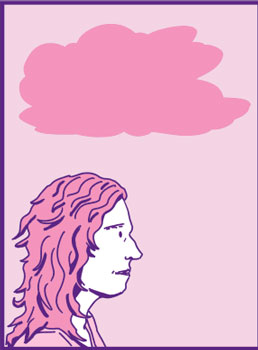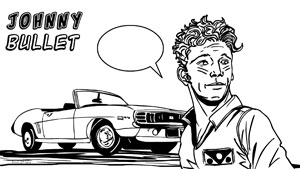|
|
 |
The comic takes as its guiding principle the main theme of Ovid's Metamorphoses. In short, everything changes, and change is the most interesting part of the story. Like Ovid, Badman uses multiple points of view in telling a series of stories loosely bound by the theme of change. Also like Ovid, Badman reflects on violence against women, and the problems of infidelity. Badman has a slightly more optimistic view of love than Ovid's, and a less ironic sense of culture. And Badman is not nearly as self-conscious as Ovid.
In his most significant departure from the ancient poem, Badman's characters are human beings, ordinary people working out problems that are familiar to readers in the depressing regularity of their occurrence.
Badman's use of color is one of the most striking features of the strip, compelling the eye and helping to establish new points of view. In colors and panels lie puzzles to be solved, and sometimes you'll see readers post comments suggesting solutions. Badman's talent for expressive anatomy is another one of the features that draws readers in, and the faces of his characters are exceptional in their lovely homeliness. The people in Things Change, especially the women, are talented storytellers, and to hear their voices is to experience something poignant and fleeting, as they pass through your life before being quickly forgotten.
 |
It's not necessary to know anything of Ovid's masterpiece to be captured by Things Change. But I like reading them together, and use Sparknotes as my guide.
Derik Badman presented at The Comic Book Bin's Second Life Comic-Con in October, and kindly followed up with this interview.
© Copyright 2002-2019 by Toon Doctor Inc. - All rights Reserved. All other texts, images, characters and trademarks are copyright their respective owners. Use of material in this document (including reproduction, modification, distribution, electronic transmission or republication) without prior written permission is strictly prohibited.

